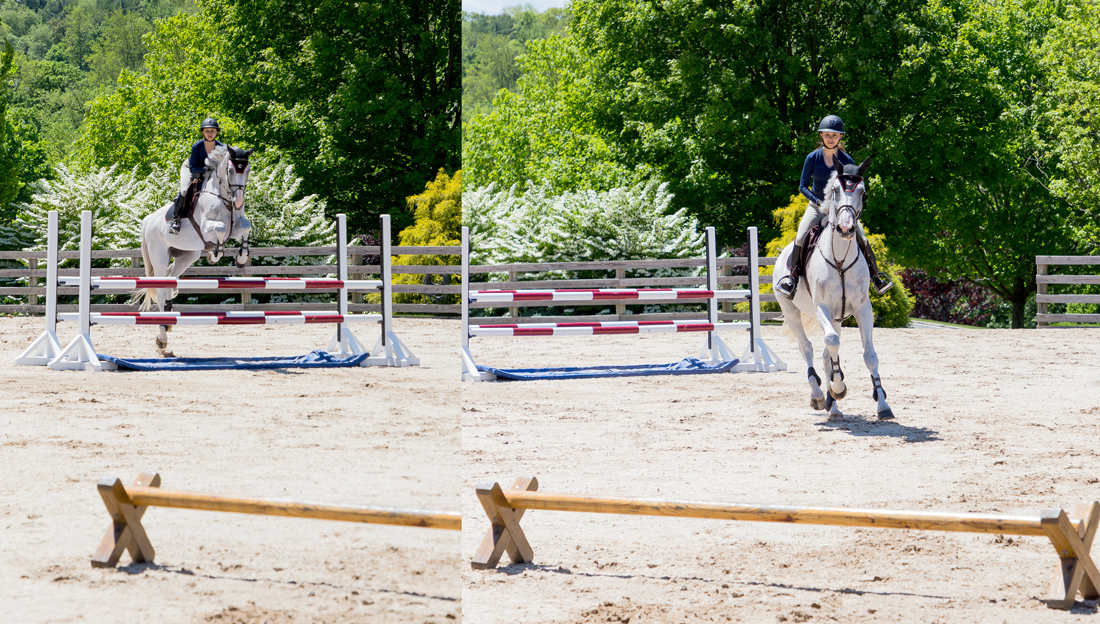Top U.S. show jumping athlete Georgina Bloomberg has a string of talented grand prix horses in her barn at Gotham North based in North Salem, NY, and at Gotham South in Wellington, FL. While you may think she and trainer Jimmy Doyle work on intricate courses when schooling at home, they instead spend most of their time focused on small jumps and cavaletti exercises, especially when they’re working on perfecting bending lines.
In part 1 they demonstrated the ‘Clock’ Exercise which works on stride adjustability – key to jumping clear rounds over technical grand prix courses. Here is another simple but effective cavaletti exercise.
Choose a Line Exercise
Set up a cavaletti with a bending distance of anywhere from four to six strides to an oxer, and a straight-line distance of three strides to a vertical. Ride both lines—oxer to cavaletti and vertical to cavaletti—back and forth, working on adding and subtracting strides like you did in the clock exercise.
“Focus on staying on the same line and getting the horse to be adjustable on that track,” Doyle said. “You don’t want to fit in an extra stride by staying out on a different line, or leave out a stride by cutting in. Stay on the same line and adjust the stride. It’s not about riding different tracks; it’s about adjustability on the same track between jumps from center to center.”
Once your horse takes off at the first jump or cavaletti of the line, look to the center of the second jump or cavaletti and keep your horse on the center track with an effective inside leg to outside rein connection.
The goal is to arrive at the second jump of a line with the horse straight with a little bit of a gap to the jump so the horse can jump up and jump clean.
You can use the adjustability you’ve developing in the bending line exercises to help practice adding and subtracting strides in straight lines of cavaletti as well.
The Keys to Riding Bending Lines Effectively Include:
• Keeping the horse straight and balanced as you turn, i.e. not allowing him to fall in or drop his inside shoulder.
• Riding from the center of the first jump to the center of the second jump.
• Staying on the same track from center to center, no matter the striding.
• Initiating the turn with the inside rein, but controlling the horse’s shoulder and the bend with the outside rein.


